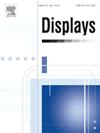AdapSyn: Anomaly detection based on triplet training with adaptive anomaly synthesis
IF 3.7
2区 工程技术
Q1 COMPUTER SCIENCE, HARDWARE & ARCHITECTURE
引用次数: 0
Abstract
In the field of anomaly detection (AD), Few-Shot Anomaly Detection (FSAD) has gained significant attention in recent years. The goal of anomaly detection is to identify defects at the image level and localize them at the pixel level. Including defect data in training helps to improve model performance, and FSAD methods require a large amount of data to achieve better results. However, defect data is often difficult to obtain in experiments and applications. This paper proposes a more realistic method for simulating anomaly data, incorporating the synthesized anomaly data into the training process and applying it to the FSAD domain through multi-class mixed training. The anomaly data generated using our synthesis method closely resembles real anomalies. The corresponding anomaly synthesis method synthesizes the anomaly data from normal samples for the adaptively selected polygonal mesh region. We enhance the model’s ability to distinguish between positive and negative samples by incorporating synthesized anomaly data and normal data as triplets during training. This results in that more detailed features for normal samples will be noticed. During the testing phase, we obtain the feature distribution of normal images for a few unknown class normal samples to quickly adapt to the detection task of new categories. The effectiveness of the anomaly synthesis method was validated through experiments. Comparisons with advanced methods in the FSAD domain demonstrated that our method achieved competitive performance.
AdapSyn:基于自适应异常合成的三元组训练的异常检测
近年来,在异常检测(AD)领域,少镜头异常检测(FSAD)备受关注。异常检测的目标是在图像层面识别缺陷,并在像素层面对缺陷进行定位。在训练中加入缺陷数据有助于提高模型性能,而 FSAD 方法需要大量数据才能取得更好的效果。然而,缺陷数据在实验和应用中往往难以获得。本文提出了一种更切合实际的模拟异常数据的方法,将合成的异常数据纳入训练过程,并通过多类混合训练将其应用于 FSAD 领域。使用我们的合成方法生成的异常数据与真实异常数据非常相似。相应的异常合成方法从自适应选择的多边形网格区域的正常样本中合成异常数据。在训练过程中,我们将合成的异常数据和正常数据作为三元组,从而增强了模型区分正样本和负样本的能力。这样,正常样本的详细特征就会被注意到。在测试阶段,我们会获取一些未知类别正常样本的正常图像特征分布,以快速适应新类别的检测任务。通过实验验证了异常合成方法的有效性。与 FSAD 领域先进方法的比较表明,我们的方法取得了具有竞争力的性能。
本文章由计算机程序翻译,如有差异,请以英文原文为准。
求助全文
约1分钟内获得全文
求助全文
来源期刊

Displays
工程技术-工程:电子与电气
CiteScore
4.60
自引率
25.60%
发文量
138
审稿时长
92 days
期刊介绍:
Displays is the international journal covering the research and development of display technology, its effective presentation and perception of information, and applications and systems including display-human interface.
Technical papers on practical developments in Displays technology provide an effective channel to promote greater understanding and cross-fertilization across the diverse disciplines of the Displays community. Original research papers solving ergonomics issues at the display-human interface advance effective presentation of information. Tutorial papers covering fundamentals intended for display technologies and human factor engineers new to the field will also occasionally featured.
 求助内容:
求助内容: 应助结果提醒方式:
应助结果提醒方式:


